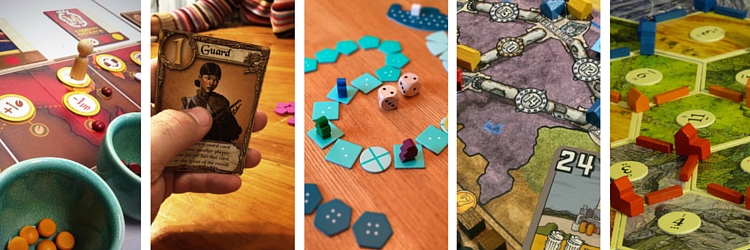In Deception: Murder in Hong Kong, 4-12 players are attempting to solve a murder and just arrived at a crime scene loaded with clues and potential murder weapons. Players need to sort through the clues with the help of their forensic scientist. Everything seems simple enough except that the murder is standing in their midst and in uniform. Players will need to suss out what the forensic scientist is hinting at, find the murder, and protect their start witness before three rounds of play elapse.
Start the game with determining who will be the Forensic Scientist. The Forensic Scientist is presenting hints so they should be the most experienced player (or at very least the one who read the rules already). Similar to the ghost in Mysterium, you have an oddly mute forensic scientist (who in my head-canon has such a strong case of social anxiety) who is unable to speak to the investigators and instead just points to their notes.
Everyone else is randomly given a roles: Mostly Investigators plus one Murderer, and in larger player counts, a Witness and an Accomplice. Everyone except the Forensic Scientist is dealt a hand of four clue cards and four weapon cards which are displayed in front of them. Similar to Werewolf, the forensic scientist has everyone close their eyes and then asks for the Murder to open their eyes and point to one of their weapon cards and one of their clue cards. This is the information that the Forensic Scientist must relay to the investigators. The Witness gets to see who the murderer is but not their murder weapon or clue and wants to survive and remain hidden. The Accomplice gets to see who the murder is and wins if the murderer gets away.

The game is played in three rounds. The forensic scientist has to place bullets on the six random tiles. Two tiles (“Cause of Death” and “Location of Crime”) are always used with four additional “Scene” tiles. Placement of the bullets will hint at the murder weapon and the clue and thus the identity of the murderer. It is best to place these slowly so players can discuss the clues and help guide the investigator to the next placement. Each player (including the murderer) then gets to make brief presentation about their opinions on the case and can once per game make and attempt to solve the murder by announcing “I plan to solve the murder” and then pointing to one murder weapon and one clue in front of one specific player. If you guess correctly, the investigators win! But if you guess incorrectly, you turn in your badge and are unable to make a guess again. However, you can still partake in the discussion on how others can make their guess. This continues for three rounds with the Forensic Scientist adding one new “Scene” tile to replace an older one of their choice.

If playing with the Witness, and the correct weapon and clue are guessed, then the Murderer gets the opportunity to guess who the witness is to win the game.
Deception is to The Resistance what Mysterium is to Dixit. It takes an enjoyable activity and adds a subtle layer of mechanics on top to create a more salient game experience. All this while retaining a quick set-up and pleasant flow of play. The tension and distrust from other social deduction games such as The Resistance or Werewolf is present but not overwhelming. You have an experience where players are working together but always glancing slightly askance at each other rather than heavy bluffing and accusations.
Deception places the emphasis firmly on the deduction part over the social part of social deduction games. Discussion more often revolve around what the Forensic Scientist is trying to hint at over whether someone is lying or not. It just feels gentler and more about subtle misdirection over outright argumentation. The murder can slink into the background and let everything play out while gently nudging people in the right or wrong direction.

The Endgame: Deception: Murder in Hong Kong can play a large group easily and the set-up is minimal (especially when compared to Mysterium) and I prefer it over Werewolf or The Resistance since the game-play is less “social” and the discussion a bit more gentle while still tense.

